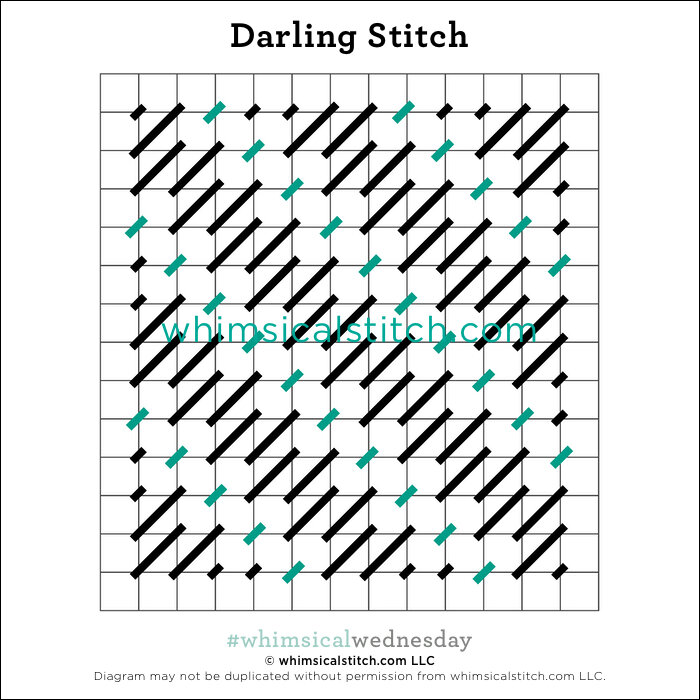The basis for this stitch is called "Main Network of Four-Way Enlarged Hot Wheels." I prefer "More Darlingness." (Thank you to Ann Strite-Kurz for the stitch inspiration and apologies for the name change.)
The dark gray lines define the stitch concept. The heart of the stitch exists in the large diamond center. The yellow tied cross in the center is just a thought starter. Consider Smryna Crosses, more diamonds, or leave it blank.
In my stitched sample, I used a matte thread for the gray lines, a metallic for the yellow lines, and a single bead in the intersection to keep it clean and simple. There are many alternatives for the intersection spot, including more beads, as illustrated at the bottom of the diagram. Truly, the only limit is your imagination. (The stitched sample can be found on whimsicalstitch.com's Instagram account.)
I discovered this stitch years ago and used it once for a solid colored background on a JP piece. You really need a large space to pull it off. The pillow still sits on my front window seat...I have yet to tire of it. That's always a good thing.
This stitch diagram, along with other #whimsicalwednesday and #smallspacesunday stitch diagrams, can also be found on www.pinterest.com/whimsicalstitch/whimsicalwednesday.
Be sure to follow whimsicalstitch.com on Facebook, Pinterest, Instagram, and Twitter.
If you like what you see on this blog, want to learn some very creative decorative stitches, and how to put them all together, whimsicalstitch.com sells stitch guides for seasonal Melissa Shirley designs. 17 guides are currently available and more are in the pipeline.
I hope you have the perfect space for this stitch and enjoy it!










